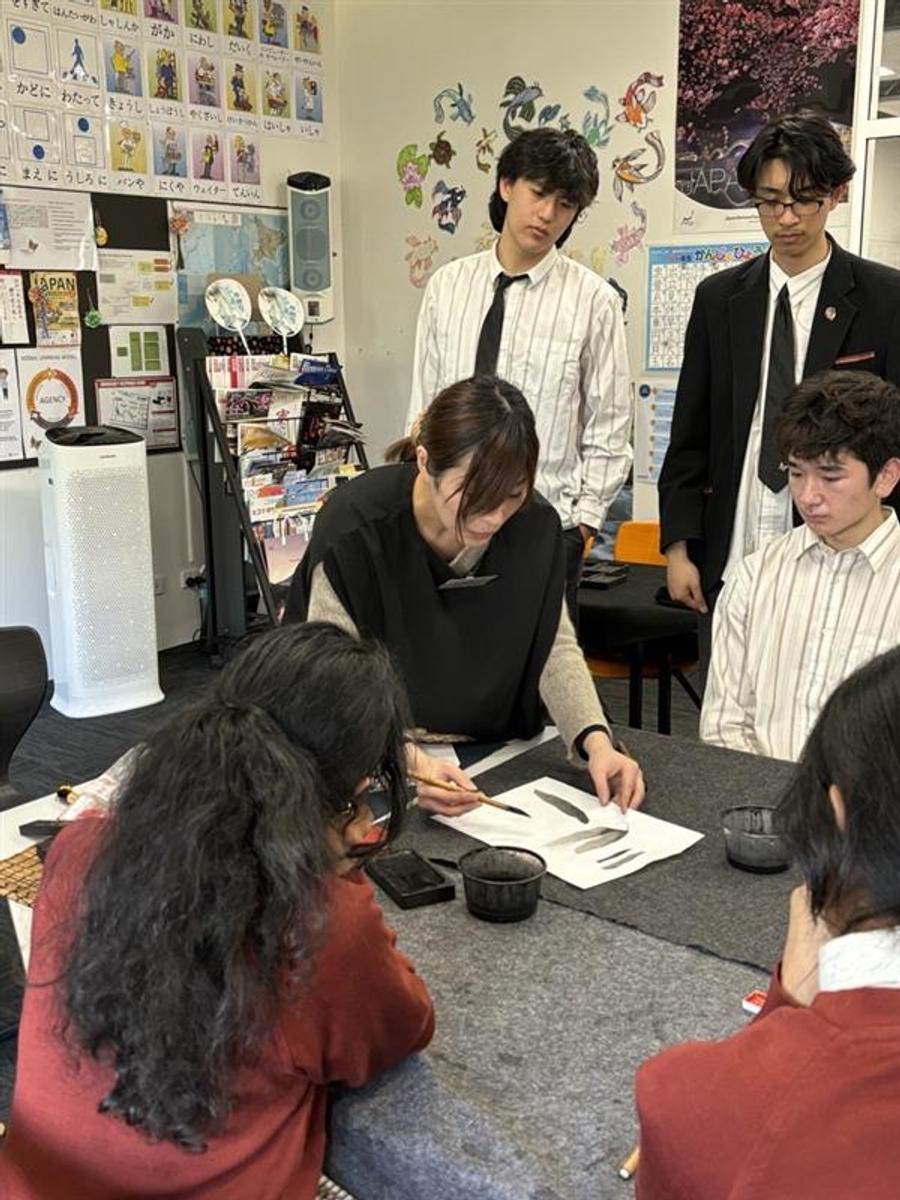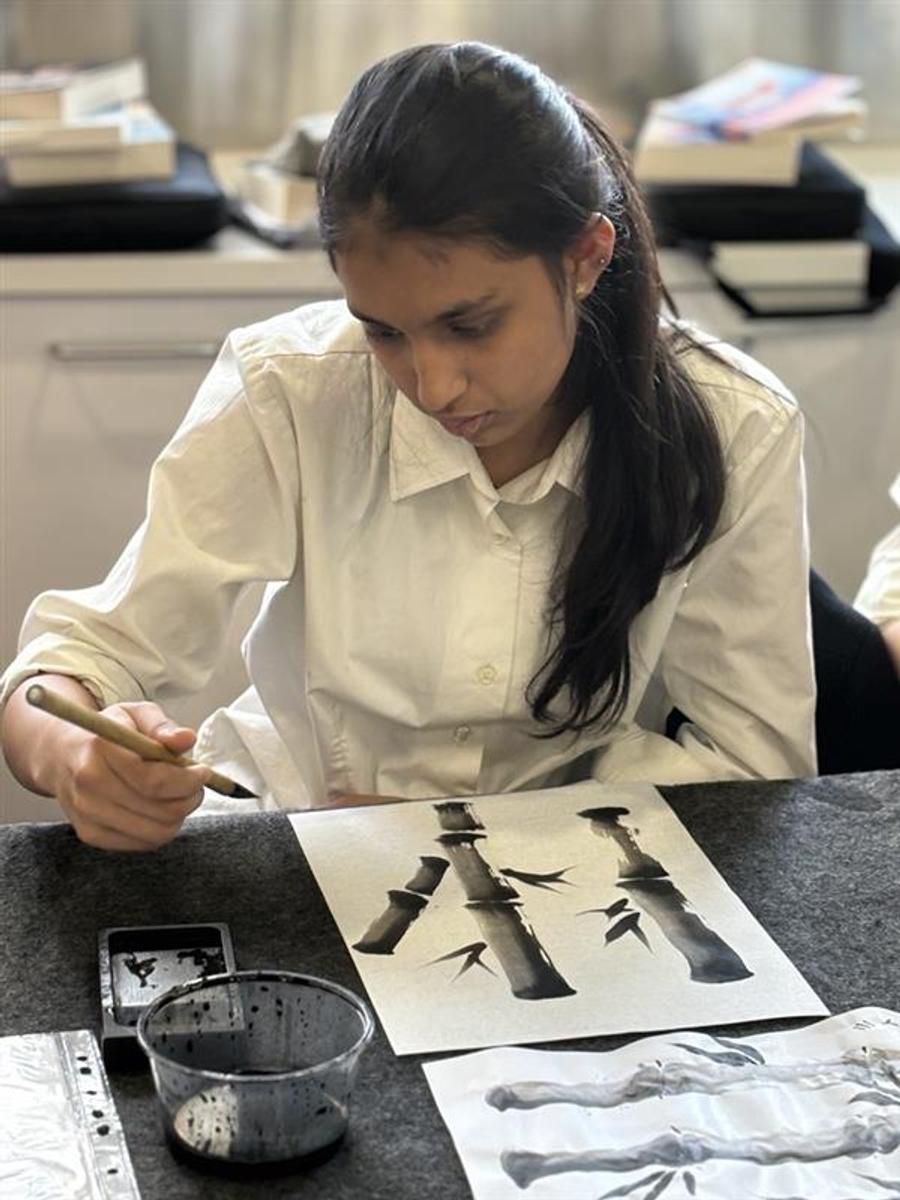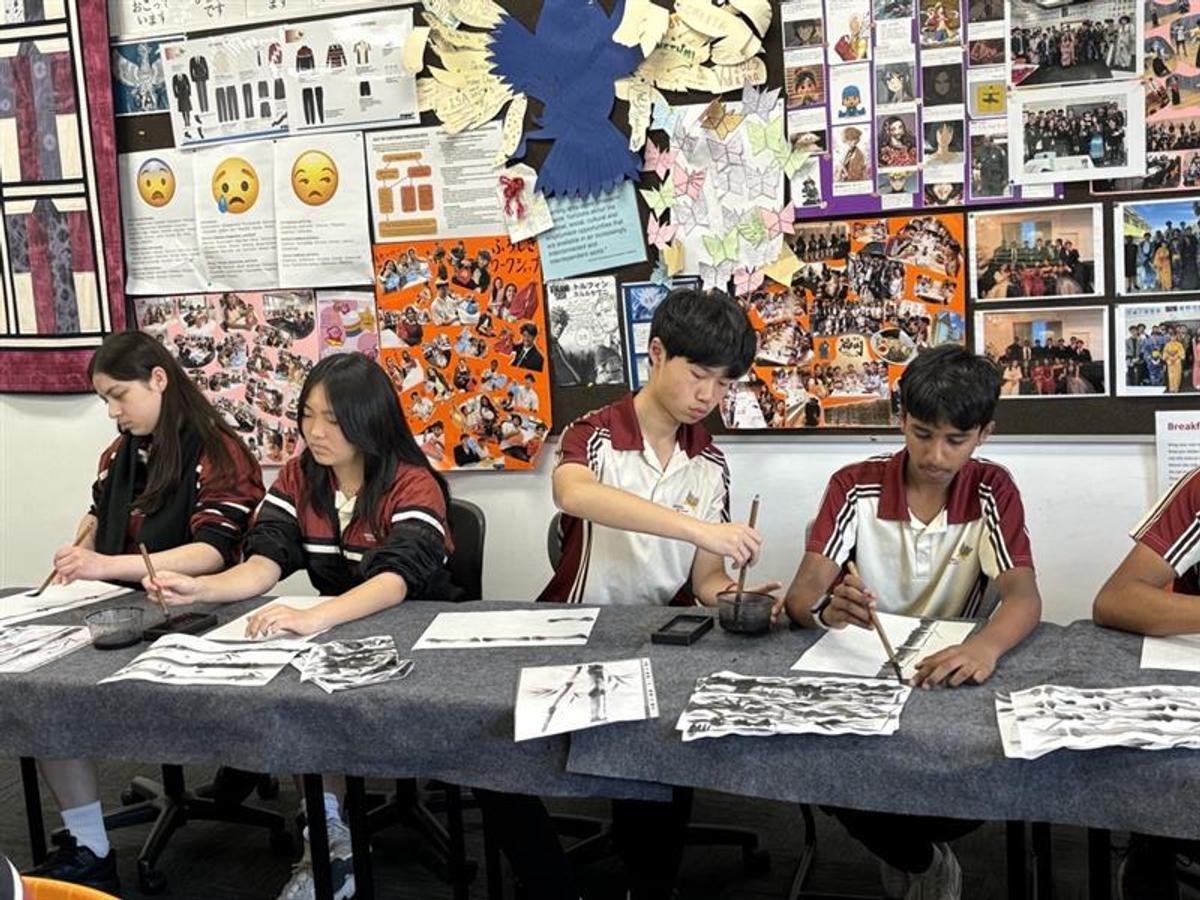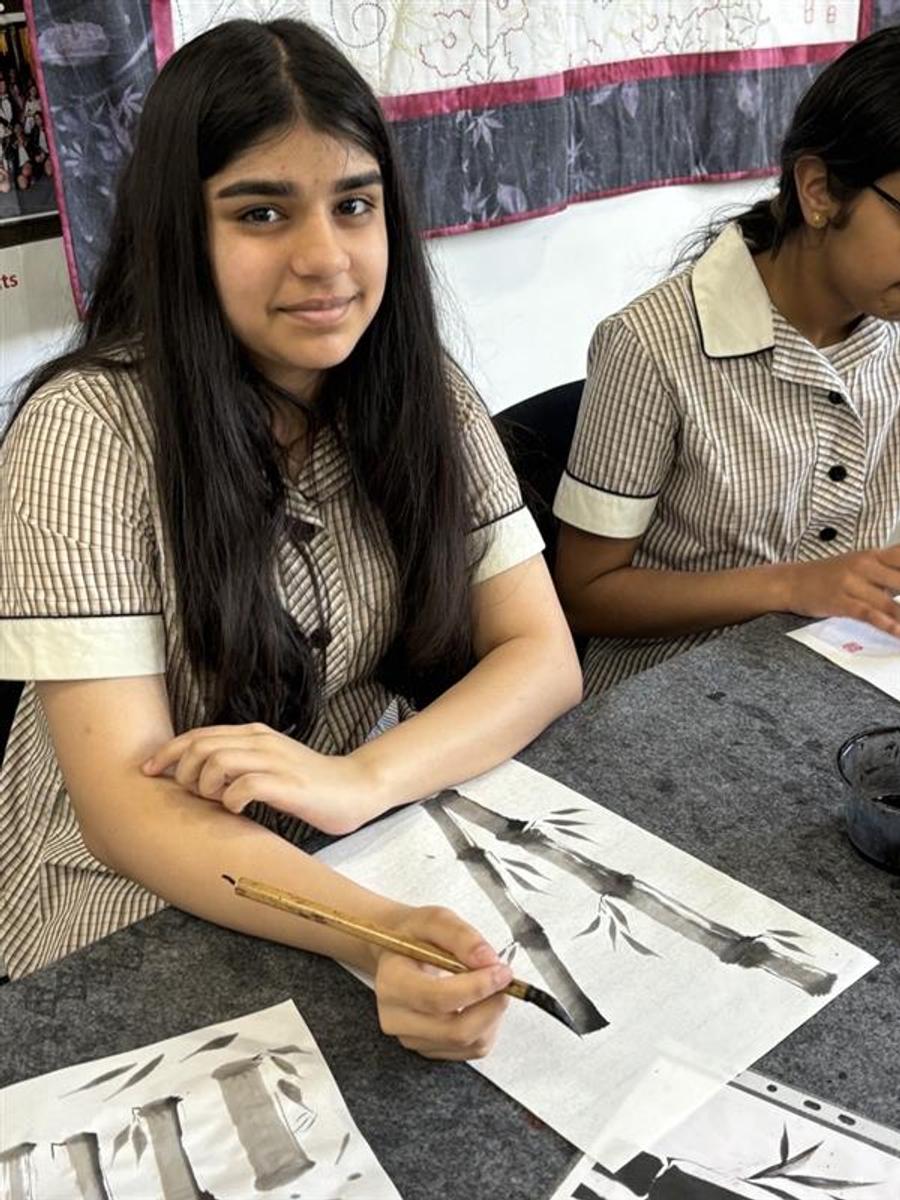Japanese Ink Painting workshop

On the 25th of October, I was extremely lucky to have participated in the Japanese Painting workshop and to (attempt to) create a traditional ink painting.
It started off with Junko Sensei, who had come to Nossal to teach us, explaining the cultural significance of Sumi-e (Japanese ink painting) and how it is a Zen art which relies on the coordination between our mind and senses. We even got to see how ink is ground from its stone form!
Afterwards, Sensei gave us a demonstration on how to utilise our calligraphy brush to create images out of only a couple of simple strokes. She also showed us how to manipulate the intensity of the ink to create depth in our paintings using shades rather than colour. Additionally, experimenting with the dryness of the brush could make for some interesting textures, such as scratch marks. Before we made our ‘good copy’ paintings on some myrtle wood paper from Sensei’s hometown, we did a few trial runs on rice paper just to get the hang of using our brushes.
Our subject matter was bamboo, which looks simple at first but really transferring the grace and elegance of its shape onto paper was actually quite tricky. Just drawing something as minute as a leaf could require immense amounts of patience and dexterity for it to look natural. Unlike with a pencil and an eraser, you can’t rub out any errors, so your first stroke always had to be your best one!
After we made at least two trial paintings, it was time for us to use the paper from Junko Sensei’s hometown. This might sound a little nerdy, but I was absolutely blown away by how delicate and refined the paper was! I had never felt anything like it in my life. However, unlike the rice paper, it was also much more difficult to paint on due to its texture. Also, while we were painting on it, we were not allowed to speak to one another in order to maximise our concentration.
In the end, my ‘good copy’ painting… wasn’t all that good but I had a lot of fun making it nonetheless! Junko Sensei said that ‘your painting should be a reflection of yourself’ and I think my painting shows how beautifully imperfect I am.
If you ever have the chance to try out Sumi-e style painting, I strongly suggest giving it a go, even if you’re not very familiar with Japanese culture. At first it’s pretty difficult but, once you’re familiar with it, ink painting is a very serene, meditative experience and I think that, with exams coming up, I’m sad I’m not doing it every day!
Fiona Dubey
Year 9





